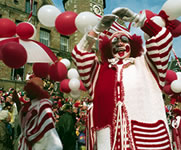Contact
Tourist-Information Regensburg
Altes Rathaus
93047 Regensburg
Email:
tourismus@regensburg.de
Internet:
www.regensburg.de
Altes Rathaus
93047 Regensburg
Email:
tourismus@regensburg.de
Internet:
www.regensburg.de
Museums

Founded in 1931, the Historical Museum sited in the former Minorite monastery in Regensburg, which was once an important free imperial city, documents the history of Regensburg's art and culture from the Stone Age to the 19th century. The collection focuses on the Regensburg area and eastern Bavaria. The archaeological section with its large collection of finds and realistic models covers the prehistory of the region in the millennia before Christ, the Roman age until around 400 AD and early history up to the 10th century. A wide range of exhibits provides visitors with an insight into life in the town in the Middle Ages. The museum also covers the heyday of late-medieval religious art up to the work of Altdorfers and the "Danube school" and holds a collection of European arts and crafts. Closed on Mondays and Thursdays, except public holidays. Close on 1 January, Good Friday, 1 May, 1 November, 24, 25 and 31 December.
» www.regensburg.de
Since 1812, the extensive building complex of the former Abbey of St. Emmeran in Regensburg has served as a magnificent permanent residence for the Princes of Thurn and Taxis, whose history stretches back to the 12th century. A guided tour of the palace museum, which was opened in 1998, takes you on a stroll through beautifully furnished salons, magnificent living quarters and state rooms that reflect the courtly splendour of centuries past. The St. Emmeran section of the museum takes visitors on a journey into the world of the ascetic medieval monks of the western Benedictine order. The neo-Gothic crypt chapel and cloister provide an insight into the burial rites of a European aristocratic family. In the royal stables there is a comprehensive collection of carriages, sedan-chairs and sleighs from the 19th and early 20th century. Admission with guided tour daily between April and October, and on Saturdays, Sundays and public holidays between November and March.
» www.thurnundtaxis.de
The Walhalla monument is a Hall of Fame and Honour located on the Danube and is one of the major artistic creations of the Bavarian King Ludwig I. Constructed by the well-known architect Leo von Klenze between 1830-1842, the Walhalla is one of the many cultural attractions on the Danube. The temple is built in Doric style, one of the grandest and most beautiful monuments built by the Bavarian King for the Germans. A huge entry gate leads to the interior. The Walhalla memorial commemorates important Germans and figures linked in some way to the history and people of Germany since 1842 in the form of marble busts and memorial plaques. The monument is considered the most important classical building of the 19th century. Closed on Shrove Tuesday and 24, 25 and 31 December.
» www.walhalla-regensburg.de
The diocesan museum has been located in the Romanesque-Gothic basilica of St Ulrich since 1986. A remarkable symbiosis of church and museum is achieved in the interior which is decorated with 13th to 16th century frescos. The museum houses art works dating from the 11th to the 20th centuries, including medieval paintings, sculptures and goldsmith's work. Renaissance, baroque, rococo and 19th century art is displayed in the galleries. Ecclesiastical treasure from the former St Emmeran, St. John and Niedermünster abbeys are particularly noteworthy, including the crosiers of the 12th century saints Emmeran and Wolfgang. There is an exhibition of contemporary art in the vestibule. Open April to October, closed on Mondays.
» www.bistumsmuseen-regensburg.de
Travel Planner
Select an option...
Map of Germany
Hotels in Regensburg
Loading



